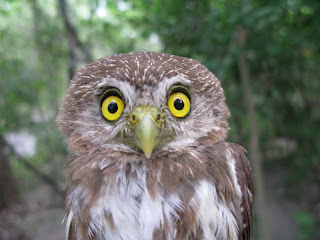The official syllabus of elementary schools can be enriched with ecological processes that form a more realistic and flexible perception of nature in children. Children’s knowledge is inundated with conservation information coming from several sources such as television, internet, movies, magazines, books, and their own professors mostly about ecosystems, loss of habitat, pollution, and loss of species, to name a few. Over time, these concepts provide children with a dual perception of ecosystem and life either they are living in a preserved environment with animals and plants or in perturbed environments where loss of plants and animals is the rule or our “everyday peanut butter sandwich”. By using images of endangered plants and animals or deteriorated forests only reinforce the idea of having either a preserved (“healthy”) environment or having a deteriorated (“dying”) environment. The point is that children observe, perceive and live in contact with their surroundings (let’s set aside nature deficit disorder) where they see that regardless all what they are taught, it does not completely match what they are told and taught. For instance, children can still see lots of trees, shrubs, herbs, birds, mammals, insects, and so on in their surroundings. So, if we are losing species as never before (as mentioned in the mass media and in class), where is that happening? (this question was taken from three 7 years old children during a workshop in northern Mexico).
The concept of resilience (in combination with succession) may provide children not only with a more complete picture of how ecosystems may respond to impacts, but also a better attitude towards the environment. The property of an ecosystem of being able to recover from a certain magnitude of disturbance over time may offer more realistic opportunities to increase children’s understanding about the real properties of the current status of our ecosystems. Children know that we have forests, prairies, fields, crops, deserts, and several other intermediate types of forest in the wilderness. Even more they can see what some human activities can do on those forests or ecosystems. Thus, by explaining the idea that ecosystems are capable of resist and recover from certain levels of natural or human-caused impacts, we could improve children’s understanding of what they are looking at in our current environment in space and time (words that are critical in ecology, right?).
Further, we can promote the idea that after undergoing disturbance or impacts, ecosystems, animals or plants not necessarily have to immediately disappear from earth. The idea that “there is not a problem because we still have lots of forest plenty of animals and plants” can be redirected into “we still have opportunities and time to help deteriorated ecosystems to recover from certain impacts or effects”. Timber harvest, fires, overhunting, overfishing, pollution, and so on are a few examples who children usually hear as “catastrophic and irreversible”, but long time ecologically sound efforts could be implemented in order to recover or try to recover impacted ecosystems. The message it is not “the ecosystem is dying or sick so leave it alone”, but “we can do something to help ecosystems to overcome impacts”. If we know how ecosystems are formed and function, we can help them get better, right?
Overall my point is, are we really giving a complete flexible perspective to children in understanding how ecosystems respond over time? Or, we are just trying to filling up their brains with a pessimistic perspective of either ecosystems are healthy or dying, that is it!. In relation to processes such as resilience (in combination to succession), it might not be the concept itself the hardest part, but the way that these ideas are delivered, associated, and put in practice during the learning process, don’t you think? Maybe I am just asking too much ....






































